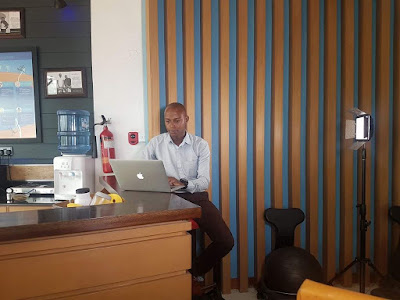The Internet of Energy
The Internet of
Energy (IoE) can be broadly defined as the upgrading and automating of
electricity infrastructures, making energy production more clean and efficient,
and putting more power in the hands of the consumer.
My blog today
will discusses how to apply ML analytics in the utilities industry to create
the IoE.I personally choose to see IoE as one system where data in Kenya will
be shared and analyzed, producing targeted, efficient results to utilities and
consumers across our country.
The
first major utility sector is Generation, which relies heavily on the work of
turbines. Turbines, whether they be fueled by natural gas,steam, nuclear, or
coal, are massive engineering marvels from a mechanical standpoint. There are
thousands of moving parts with extreme tolerances, and minute disturbances in
the system can lead to major problems, causing downtime, loss of power, safety concerns,
and more.
In
our country, many grids are plagued with unreliable service. This is primarily
because of aging equipment; poor maintenance; and in many cases, the struggle
to upgrade power systems to keep up with very high annual demand growth rates.
Investment in IoT for both existing and new equipment has the potential to
significantly reduce unscheduled downtime by identifying problems before they
occur, thereby improving reliability and reducing costs. Other applications of
IoT are optimal use of generation assets to increase the efficiency of
production. In conventional power plants, IoT would be used to tune the
operation of a power plant in real time and to balance production with life
cycle cost of maintenance and life of equipment. As an example, GE is about to
launch a digital power plant systems for coal plant in Lamu. GE
claims its digital technologies when applied to new coal and gas fired
power plants will increase fuel efficiency by 3%, power output by 2%, and
reduce unplanned downtime by 5%, operation and maintenance costs by 25%, and
fuel consumption during starts by 20%.6 In Kenya, these strategies may be used
to reduce cost of electricity production and emissions. Another good example of
IoT use for optimization of operations is in the wind power industry where (i)
wake losses are reduced in a wind farm by adjusting pitch and yaw angles of
individual turbines, (ii) turbines production is increased above rated value
in a controlled manner as long as the stress and fatigue loading are within
acceptable limit, and (iii) settings of individual turbines are optimized to
local conditions to increase output. GE claims a 5% to 10% increase in annual
energy production with these strategies.7 A futuristic application of IoT is a
holistic optimization of the entire power network with the goal of
decentralization and defossilization of the power sector. IoT has the potential
to achieve such a transformation in which (i) renewable energy is generated
close to load centers; (ii) energy storage devices are used to store excess
energy and deliver energy during periods of high demand; (iii) demand response
is used to balance supply and demand; (iv) flexible centralized fossil
fuel-based power plants plan production based on real-time predictions of
variable renewable generators; and (v) dispatch logic, and controllers are used
to manage the flow of power. Several of these transformations are being tested
in a number of pilots in our beloved country with the goal of achieving close
to 100% renewable energy in the power sector and IoT will be a key enabler.
Happy
Madaraka holidays!
Complied
by: Samwel Kariuki

